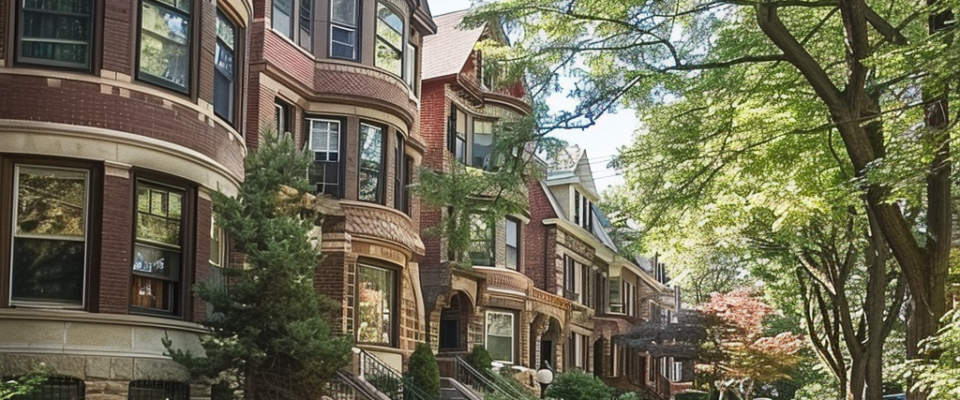Historical overview of Brooklyn
A historical overview of Brooklyn covers the borough’s rich heritage, dating back to its early days as a Dutch colony in the 17th century. During this period, Brooklyn was a center of agriculture and commerce, attracting many emigrants and becoming a diverse cultural mosaic. An important stage in the history of Brooklyn was its union with New York in 1898, which led to accelerated development of infrastructure and expansion of urban space.
In subsequent decades, Brooklyn became a symbol of American multiculturalism, attracting many immigrants and becoming a platform for cultural exchange. A significant number of Brooklyn’s buildings and neighborhoods retain historic architecture, reminiscent of its rich past. A historical overview of Brooklyn shows its evolution from a humble colonial settlement to a modern cultural and economic center, while maintaining its unique character and spirit.
Modern trends in urban development
Modern urban development is subject to constant changes and development in accordance with the requirements of modern society. In this context, several pronounced trends are observed that determine the appearance of cities and their functionality.
- Sustainability and environmental friendliness: Modern urban development projects are increasingly focused on creating sustainable and environmentally sustainable environments. This includes using renewable energy, creating green spaces and minimizing environmental impact.
- Urban design with public accessibility in mind: Modern cities strive to create spaces that are accessible to all categories of citizens. This includes public parks, plazas and recreation areas, and infrastructure for people with limited mobility.
- Innovative technologies and architectural solutions: With the development of technology, new opportunities appear in urban construction. Smart cities, houses with automated systems and the integration of the Internet of Things are becoming increasingly popular in modern buildings.
- Building Density and Vertical Building: Due to limited urban spaces and increasing numbers of residents, the trend is towards increasing building density and building upwards.
- Adapting to climate change: Modern cities are increasingly faced with extreme weather conditions caused by climate change. Therefore, urban development includes adaptation and resilience measures to cope with the negative consequences of climate change.
Innovation in architectural design and technology
Innovation in architectural design and technology in the modern world plays a key role in transforming the urban landscape and ensuring sustainable development. One of the most important aspects is the use of modern technologies in design and construction.This includes the use of computer simulation, virtual reality and extended reality to create more accurate and efficient designs, as well as preliminary analysis of possible problems and solutions. Technological innovations are also influencing materials and construction methods, opening up new opportunities to create sustainable, energy-efficient and long-lasting buildings.
Beyond technology, architectural design is constantly evolving new concepts and approaches. Modern architects strive for innovative forms and functional solutions that reflect the modern needs and values of society. This could include concepts such as smart cities with integrated management systems, adaptive reuse of space and the integration of natural elements into urban development.
Development of infrastructure and public spaces
The development of infrastructure and public spaces plays a key role in creating resilient and attractive urban environments. Modern cities strive to create convenient and accessible infrastructure that promotes better mobility and connectivity for citizens.This includes the construction of modern transport networks, including subways, bus routes and bicycle paths, as well as creating an efficient public transport system and pedestrian infrastructure.
In addition to transport infrastructure, the development of public spaces plays an important role in shaping the socio-cultural environment of the city. Modern cities strive to create unique and multidisciplinary public spaces, such as parks, squares, embankments and public squares, which become centers of activity and interaction among citizens.
Sustainable development and environmental initiatives
Cities are increasingly focusing on creating environmentally sustainable and energy efficient systems to reduce negative impacts on the environment and ensure the conservation of natural resources. Environmental initiatives include the use of renewable energy sources such as solar and wind energy, the introduction of energy efficient technologies in construction and resource management, and measures to reduce air emissions and improve air quality.
In addition, cities are actively developing strategies to preserve and enhance green space and natural resources in the urban environment. This includes the creation of parks, gardens, green areas and protected natural areas, as well as measures to improve water quality and reduce soil pollution. Sustainable development and environmental initiatives help cities become healthier, more livable and more resilient to climate change, promoting the well-being of citizens and preserving natural resources for future generations.
Opportunities for future development and prospects
Future development opportunities and urban development prospects present a wide range of innovative and sustainable approaches that can make cities more modern, resilient and livable. One of the main prospects is the further development of smart technologies and smart cities, where the integration of digital systems and data will optimize the management of city resources, increase the efficiency of public transport, and ensure the safety and comfort of citizens.
Another important perspective is the development of the concept of sustainable cities, where urban development will be aimed at minimizing environmental impact and optimizing the use of resources. This includes creating energy-efficient buildings, developing public transport, developing cycling and pedestrian zones, as well as increasing green space and improving air quality.
Questions and answers
Answer 1: Brooklyn was originally a colonial settlement, a center of agriculture and trade that attracted emigrants and became a cultural mosaic.
Answer 2: Consolidation with New York City in 1898 accelerated the development of infrastructure and expanded the city’s space, facilitating its evolution into a cultural and economic center.
Answer 3: The concept of sustainability includes using renewable energy, creating green spaces and minimizing environmental impact.
Answer 4: Urban planning should ensure accessibility for all categories of citizens, including public parks, squares and recreation areas, as well as infrastructure for people with limited mobility.
Answer 5: Modern cities face the challenges of extreme weather conditions caused by climate change, so urban development includes adaptation and resilience measures to cope with the negative effects of climate change.

